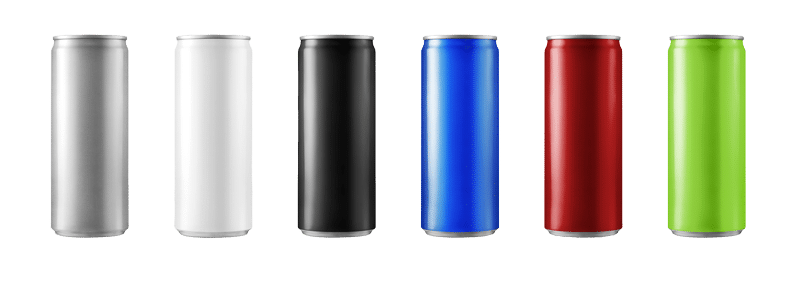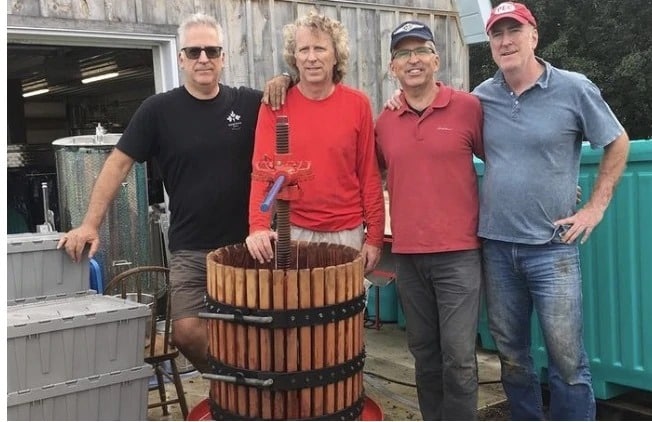Those who’ve followed our journey toward launching Archives know we find a particular thrill in ‘discovering’ and sharing small winemakers who often don’t sell their bottles beyond their own website. New Prince Edward County winery Last House takes this a step further; they don’t even have a website yet. Nor do they have a tasting room. All this means that until now, the only way to get Last House wine was to know winemaker André Gagné or his family.
What a thrill it was for us to meet André a couple days before we opened and take delivery of a first case of Last House Wine. At our request, he initialed the first six bottles of his Pinot Noir, ‘Hillier Rouge,’ to hit Ontario shelves. He also dropped off six bottles of a truly unique still Piquette, made from the leftover grape pomace, stems, and skins into a refreshing light drink.
The explosive growth, over the past two decades, of Prince Edward County as a high-end wine destination has led many to call it the ‘next Burgundy.’ It’s cooler climate and limestone topography have yielded extremely refined Chardonnay and Pinot Noir, as well as a uniquely laborious ‘buried vines’ process performed at the beginning of each winter. Last House is the latest entrant to the PEC scene, albeit without the swanky-pastoral aesthetic that draws so many from Toronto and further afield. Last House’s focus is squarely on the wine, and the début has been impressive.
Amidst the excitement of opening the shop, we were able to grab a quick chat with André Gagné to discuss his inspiration and visions for the future of Prince Edward County wine.
AWSM: What was your journey into winemaking?
André Gagné: I started to help my father make homemade wine in the 1960’s. In the 1980s and 1990s I sourced grapes from Niagara and made my own wines.
Tell us about your property and its terroir.
We’ve got 5.25 acres of Pinot Noir and Chardonnay as well as a small orchard of Golden Russet Apples. The soil is Ameliasburgh Clay Loam over a layer of limestone shale. The property is situated directly on Lake Ontario and benefits from a later spring start and a longer fall season. It’s a great site for early ripening varieties, giving great fruit with minerality and superb acid balance. We plan to stay this size and keep making the best wines possible with our property.
Where did the name Last House come from?
It’s the title of a book by American author MFK Fisher. Both my wife Debra and I love Fisher’s writing. She retired from her writing career in Europe and settled in California. A friend allowed her to build a house – her last house – surrounded by vines on his property. There she published her last book, a collection of memoirs called Last House. Debra and I both came from military families that moved frequently. As a couple we have had 12 addresses. The move to PEC includes a house which we renovated, as well as a vineyard and winery. We sincerely hope it is our Last House.
Can you walk us through the wines you’ve released so far?
The 2019 vintage consisted of Estate Pinot Noir, Estate Chardonnay, and a Reserve Estate Pinot Noir.
The 2020 vintage consisted of an Estate Pinot Noir, Estate Chardonnay, a second tier Chardonnay made from young vines, a Piquette made from Pinot Noir, and a Cider made from Northern Spy apples.
If you had to sum it up, how would you describe PEC wine?
When well-made, Prince Edward County wines are world class. The County loves Chardonnay and it can be used to make bracing table wine and rich, refreshing sparkling wines.
Pinot Noir is hard to grow anywhere but with sound ripe fruit, a County Pinot can also be a world class wine. Of course it makes great sparkling as well.
Do you have a winemaking philosophy?
Just trying to be as non-interventionist as possible in the winery. That means using indigenous yeasts and no chemical additives other than a minimal amount of sulphur.
What does the future hold for PEC wine? Will people come to view the County as the ‘next Burgundy?’
Prince Edward County is a world class wine growing region and a serious alternative to Burgundy. Full stop.
It has the potential to be recognized as such by knowledgeable wine consumers if enough producers focus on the grapes that do well, Chardonnay especially as well as Pinot, and if they put in the effort to produce a quality product.
Will we get there? I am not sure. The business model is very tough and causes a focus on economic survival by many. We need a greater critical mass of quality focused producers to gain more recognition around the world.


